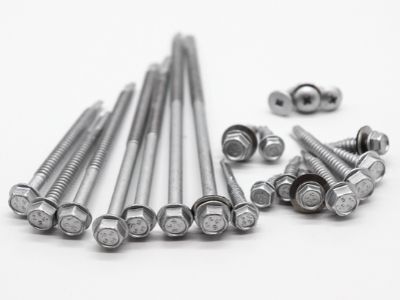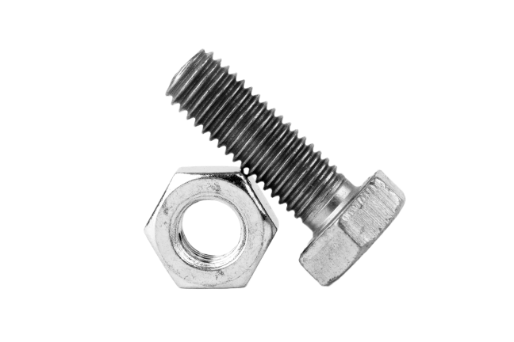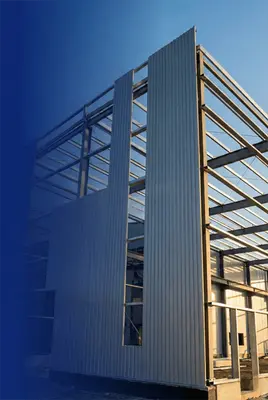
From woodworking to metalwork and machinery, pan head screws are an ideal fit for a diverse range of applications due to their distinct design. In this article, we will break down the components of a pan head screw including its functionality and uses.

Intro to Pan Head Screws
The typical pan head slotted screw has a unique, unmistakable shape - its large circular top resembles the base of an upturned frying pan. This particular type of fastener is designed for both visual appeal and safety purposes. Pan head screws provide the perfect solution for minimal protrusion above a surface, as their rounded design eliminates any sharp corners or edges.
Perfectly suited to tight-fitting spaces and surfaces where an even finish is desired, they also offer superior fastening due to their larger surface area which evenly distributes force - preventing damage to your material in the process.
Other Styles of Pan Head Screws
The rounded head slotted screw is the most recognized style, but any screw with a flat surface on the underside of the head is generally considered in the category of pan head screws.
Uses for Pan Head Screws
Electronics Industry
In the electronics industry, pan head screws are a popular choice for fastening electrical components, such as circuit boards and electronic devices. Due to their non-countersunk design, pan head screws provide good support and distribute the load evenly on the surface, which is particularly important for delicate materials like printed circuit boards.
Machinery and Equipment
Pan head screws are also used in the assembly of machinery and equipment. They are suitable for securing parts together, especially in applications where the parts may experience vibrations or movement during operation. The large, flat head provides additional stability and helps maintain a secure connection between components.
Cabinetry and Woodworking
In cabinetry and woodworking projects, pan head screws are used to attach hardware, such as drawer pulls and hinges, to the wood. The non-countersunk head allows for better grip and stability, and helps to ensure a secure and long-lasting attachment. Additionally, the flat head design allows the screws to sit flush against the wood, for a cleaner appearance and reduced risk of snagging or injury from protruding screw heads.
Automotive Industry
Pan head screws are used in the automotive industry as well, where they are employed in various applications such as securing trim, panels, and other components. The screws' ability to distribute the load evenly makes them ideal for attaching lightweight materials, like plastics, without causing damage or deformation.
Metal Building Construction
Pan head screws are commonly used in metalworking projects, including metal building construction. The pan head screw's wider surface area distributes the force of the fastening more evenly, making it less likely to damage the metal material it is screwed into. In metal building construction, pan head screws are used to fasten metal panels to metal frames, attach insulation to metal frames, and secure metal trim and flashing to metal frames.
Moreover, pan head screws used in metal building construction have the added advantage of being self-tapping. This means they can form their own threads as they are inserted into metal wall panels - which eliminates the need to drill any pre-existing holes! Such convenience makes them incredibly popular, due to their speed and ease of installation without requiring specialized tools or equipment.
Advantages of Pan Head Screws
Load Distribution
One of the main advantages of pan head screws is their ability to distribute the load evenly across the work surface. The non-countersunk head design ensures that the screw head sits on top of the surface, to spread the working load and prevent damage to the material. This feature is particularly useful for applications involving delicate or thin materials that may be prone to damage or deformation.
Versatility
Pan head screws are highly versatile and can be used in a wide range of industries and applications. From electronics to woodworking and automotive industries, pan head screws are a reliable fastening solution. Their availability in various materials, sizes, and thread patterns ensures that there is a suitable pan head screw for most applications.
Ease of Use
Pan head screws provide the convenience of being compatible with an assortment of driving tools, like Phillips, slotted, or square drive. This makes them accessible for anyone to use and install–even those without a background in fastening materials.
Tips for Choosing the Right Pan Head Screw
When selecting a pan head screw for your project, consider the following factors to ensure you choose the most suitable option:
1. Material: Determine the material of the screw based on the environment and application. For example, stainless steel may be ideal for outdoor or corrosive environments, while brass can be more suitable for decorative applications.
2. Thread pattern: Choose the appropriate thread pattern based on the materials being fastened. Coarse threads are suitable for softer materials like wood, while fine threads may be better for harder materials like metal or plastic.
3. Screw length and diameter: Select the right length and diameter for your project based on the thickness of the materials being fastened and the required load capacity.
4. Driving tool: Ensure that you have the appropriate driving tool for the type of screw head you choose. A drill is a great tool for Phillips-Head, Torx-Head, and Hex-Head screws. You can also use a drill for slotted head screws, but it can be difficult to keep the drill bit in the slot.
How Are Pan Head Screws Measured?
You can determine the length of a screw by measuring from where its head sits flush against the surface to its threaded tip. Hex, pan, truss, button, socket cap and round head screws should all be calculated from directly below their heads down to their pointy ends.

Diameter and Length
When it comes to dimensions, you have many to choose from. From diameters #6-14 in 1/2" - 4" lengths with options for both 1/4” and 1/2 increments as well as head bearing diameter of 10-20; the possibilities are endless! Make sure to select the one that works best for you.
Fastener Systems Stocks a Wide Variety of Pan Head Screws
Fastener System Inc. has a selection of pan head screws that is unmatched. We offer a variety of materials, sizes, and thread patterns for the professional and DIYer to choose from. Furthermore, we also have a wide variety of tools, caulks, and other everyday construction items to accommodate your needs.
Contact Fastener Systems today to receive a quote, or order an online catalog to view our entire product line.

